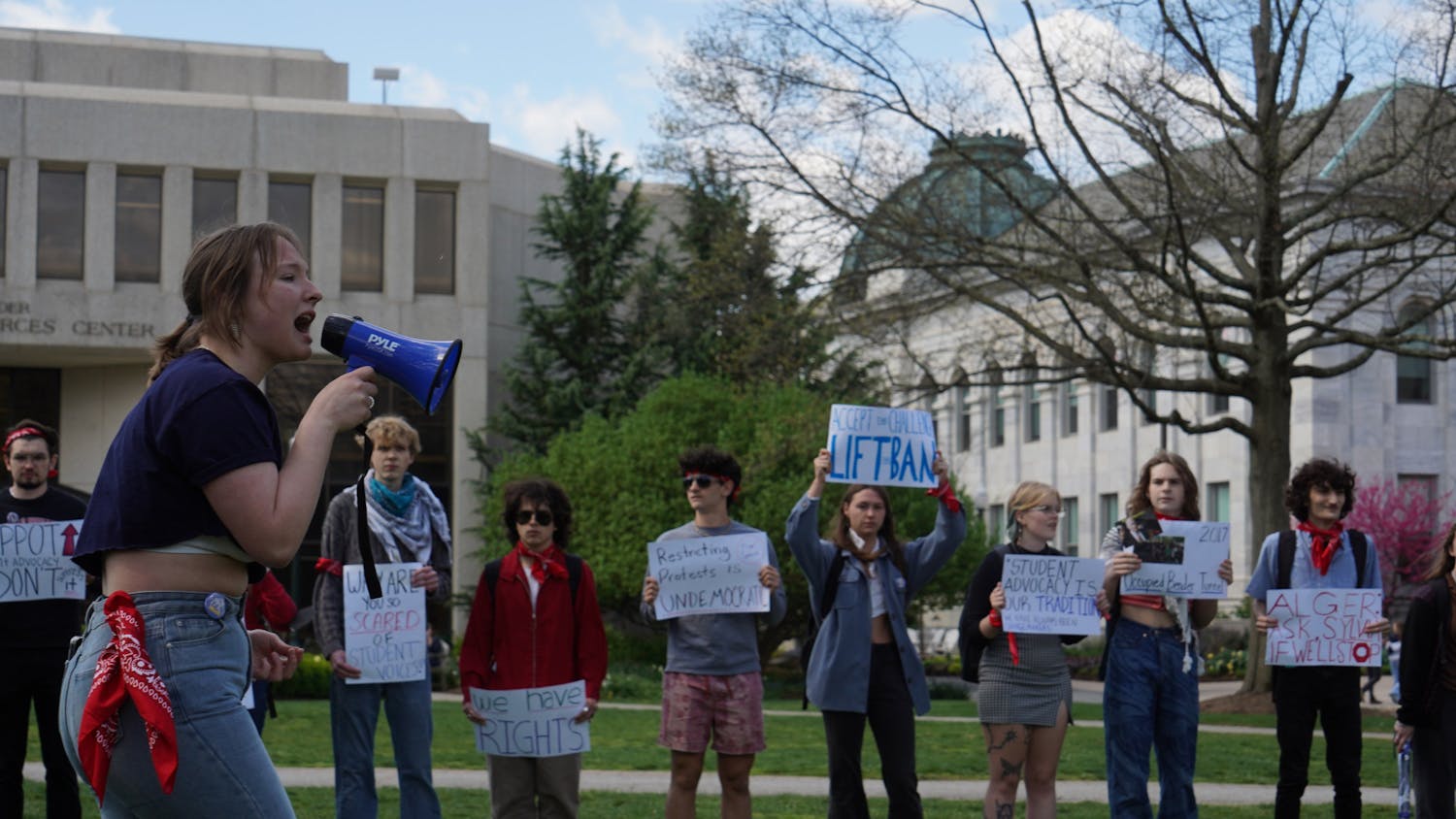Correction appended
While the Army Corps of Engineers has already informed residents on Glenbrook Road of emergency shelter procedures, AU will not brief the community on an emergency plan until April, according to Assistant Vice President for Communication and Media Camille Lepre.
Starting in May, the Corps expects to find more debris from the former WWI-era munitions site at 4825 Glenbrook Road. The Corps will enclose the area and use an air monitoring system. The current low-probability excavation is in the open air, and the Corps does not expect to find additional debris until May.
Army Corps of Engineers spokesperson Andrea Takash said the Corps has briefed AU’s administration on the public protection plan, but when to communicate the plan to the AU community is the University’s decision.
4825 Glenbrook, once called “the hole of Hades” for the WWI experiment materials buried there, was demolished in November as part of the Corps cleanup efforts. The house has been the site of two previous Corps investigations, including one from 2000 to 2002. The second investigation, in 2010, revealed a jar of arsenic trichloride.
Public address speakers and strobe lights will be used to alert the community in the event of an emergency during high-probability work, according to the Corps. Sirens and speaker systems will also be placed at 4825 Glenbrook Road, Takash said.
A map indicating the residences within the “shelter-in-place” zone during “high-probability” work includes Watkins and AU President Neil Kerwin’s home. Shelter-in-place procedures instruct residents to take cover wherever they are in the case of an emergency at the site.
Progress report on munitions cleanup
The first phase of cleanup at 4825 Glenbrook Road is wrapping up, with the Army Corps of Engineers finishing low-probability work at the former WWI munitions site. At the monthly Restoration Advisory Board meeting in February, the Corps reported that they have yet to find any chemical or munitions materials from the site at 4825 Glenbrook Road. The Corps expects to finish this phase in two weeks.
The “low-probability” work included test pitting, digging small holes to search for additional buried weapons, at the back of the property closest to the Kreeger roadway behind Watkins. During the work, the Corps does not expect to find materials from the former defense site.
The Army Corps has conducted other “low-probability” investigations in recent years at the AU Experiment Station (AUES) site that have revealed debris and munitions. During an operation next to the Public Safety building in 2010, Army Corps workers unearthed a 75 mm artillery piece buried under the building’s lower entrance.
“Even though we have encountered AUES materials during low probability work at other areas of Spring Valley, there has been no documented release of concern to the community,” Takash said. “Just because we’ve found something doesn’t mean there’s a chemical release to the community.”
Correction: This article originally stated that the Army Corps of Engineers was going to place warning systems at Watkins and Kreeger. Instead, they're placing a warning system at 4825 Glenbrook Road, the site of the cleanup. It also inaccurately said that an investigation of 4825 Glenbrook Road in 2007 found three jars of arsenic trichloride. Instead, it should have read that a 2010 investigation revealed one jar of arsenic trichloride. lGiangreco@theeagleonline.com




